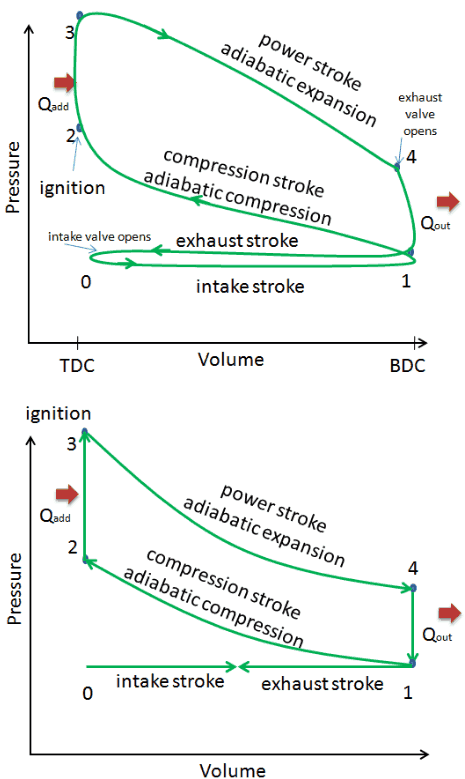Hi Gordon,
As I am exploring the pressure cycle of the Atkinson Differential engine, I have been re-reading the thread, trying to extricate some extra glimmer of inspiration.... Your comment "the original design uses atmospheric valves instead of mechanically actuated valves" inspires a question or 2:
I imagine - as I have no drawings of engine - that the "chamfered" piston is actually performing the job of the valve timing by opening and closing ports to atmosphere - as appropriate to the pressure within the chamber? So I guess there is
- the exhaust port in the cylinder, which when exposed towards the end of the Power piston's stroke, but part-way down the stroke of the "valve" piston, permits the exhaust to vacate to atmosphere by the pressure differential between the cylinder and the atmosphere:
- When the cylinder pressure has then dropped to atmospheric, the non-return "automatic" valve closes on the exhaust as the valve piston continues to travel and cause a negative (to atmospheric) pressure in the chamber:
- Then when the valve piston traverses the intake port, the negative pressure causes the intake through the inlet "automatic" (non-return) valve.
- As the pistons continue, the power piston creates more negative pressure to draw-in more air through the intake, until the valve piston has traversed back up the bore to close the inlet valve.
- But as the pistons proceed, there is some small compression while the exhaust port is still exposed, thus allowing some mixture to vacate the cylinder via the exhaust auto-valve, before the valve piston closes the exhaust valve. - Could this be the cause of some "wet fuel" appearing in the exhaust?
- Following closure of the exhaust valve by the transition of the valve piston, the ensuing compression can proceed to ignition firing expansion and the whole thing continues to cycle.
Please correct any foibles or errors in my description? I hope to do a similar numerical model to develop the combustion pressure volume cycle of this design after I have a satisfactory version of the Perreault design of mini-A engine with slide valve.
If you are able to determine timings of all the events from your drawings/CAD of your engine, starting at "ignition" and at approx 3 degree intervals, then this will be a great help to me, but I realise there are hours of mindless work to do so, as the combustion chamber volume is a complex solution of off-set phased piston motions that are not necessarily sinusoidal, so if you are unable then don't loose sleep. I'll find another way.
Thanks,
K

















